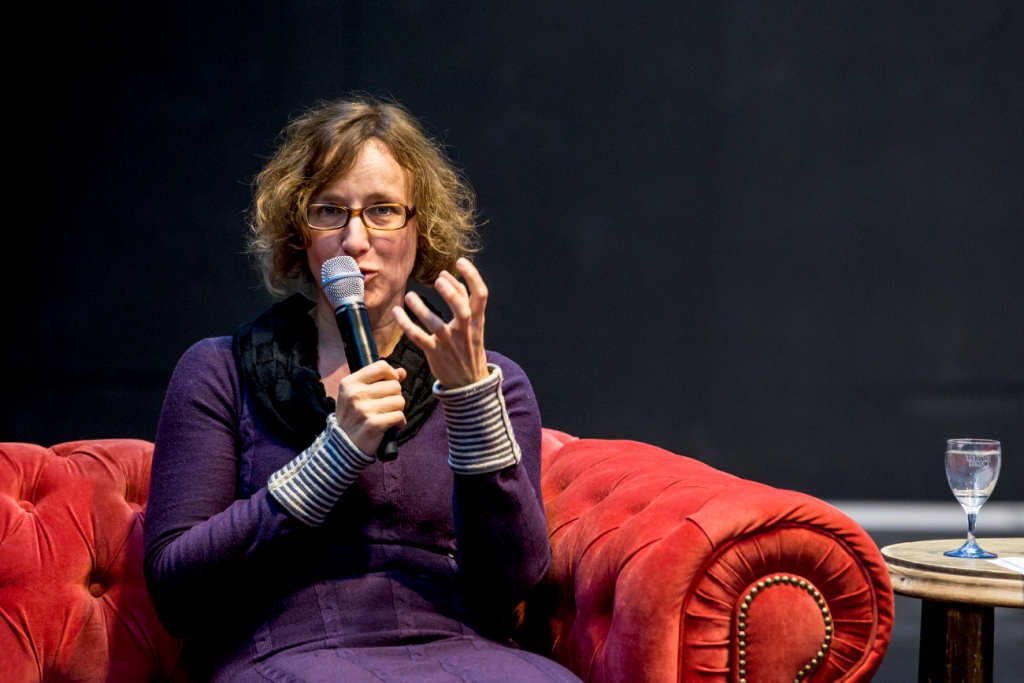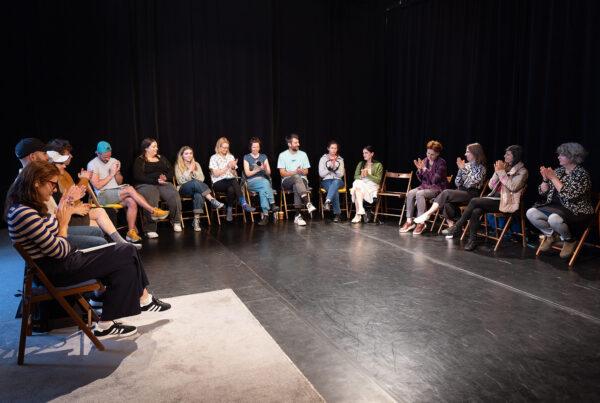Happy New Ears, 20 – 22 Mannheim / Germany
November 2016 in the German city of Mannheim, not so far from Frankfurt where ASSITEJ Germany has its office.
We – about 150 people who are interested in music theatre for young audiences – have received an invitation to listen: Happy New Ears labels an international festival of contemporary music theatre for young audiences and a congress with a focus on experiments in this field. The festival explores a variety of forms, music, theatrical spaces and aesthetic choices in German and European music theatre for young audiences. Several productions address children as young as six months, only one dares to create opera for youngsters aged 14 and up.
Artists and experts from several countries have come to Mannheim to listen and see, to present and perform and to challenge traditional ideas of what music theatre might be within the German theatre system. The congress takes the festival programme as an impulse to discuss the idea of experiments. Charlotte Seither, representative of the composers’ association defines an experiment as a permanent search, an impetus for change, a questioning of power relations and hierarchies, a movement that aims at changing society by changing something within those performing and those listening. Her statement was made at the very end of the conference, but could – and possibly should – have been an initial spark for a discussion about the political dimensions of the work we do, no matter whether it is presented on a big or small stage.
Already in her introduction to recent developments in music theatre for young audiences, Ina Karr, artistic director of the opera at the state theatre in Mainz, confirmed that despite a great variety of new works, forms, productions and competitions, it is yet too early to describe a change in paradigms. She emphasizes two aspects: The first is the focus on listening and on the ability to hear humans have already as babies. Hearing is constant. It gives us a sense of place and space, it can be filtered and focused. A rhythm or a beat can be felt and heard. All these processes need to be reflected in much more detail when producing a music theatre that asks us not only to hear but to listen, which aims to strengthen hearing as a sense which offers a multitude of access to our audiences. Secondly, Ina Karr, discussed the idea of intertextuality in music theatre for young audiences. This concept contains the possibility to combine different traditions of theatre, dance, music and visual arts. It also invites us to explore new production processes and new ways of seeing musicians on stage. How do they present themselves as performers and musicians at the same time? How do they address an audience? How can the act of creating music be made visible and enjoyable? How can it become part of what is offered to the audience as an invitation to continue a musical dialogue?
These central ideas from the introductory talk – a focus on hearing and listening and an openness for intertextuality – create the background for workshops with artists from different fields and also for the way we see the performances presented in the festival programme.
In a workshop on musical cultures in dialogue, I learn a new term: musical multilingualism. The idea behind this concept is, that getting to know musical styles from different
regions of the world is like learning a language. Emotions and knowledge are incorporated in a musical language and I need to know more about its context, its production, its meaning and its history to become multilingual in a musical sense. Music is communication. Music is social practice. In the workshop we meet Lalitha Muthuswamy from Southern India, a visiting professor at the University of Hannover. She plays the violin for us and tells us about notation and tradition, ornamentation and singing instruments. This encounter with a musical language I don’t know reminds me: The world is full of languages to be curious about.
This sense of curiosity is central to the feedback from the workshops’ participants and from the expert observers. A plenary session at the end aims at encouraging more experiments in different contexts. It concludes that it’s always important to listen and learn before you judge and often better to just do things and make your ideas become an ear-opening experience for yourself and others. This sounds simple, but it is not an appeal to reduce complexity, but an appeal to be courageous: Silence is an encounter with yourself. Listening is an encounter with the world.
Meike Fechner (ASSITEJ Germany), November 2016
Contact: ASSITEJ Germany / Meike Fechner (General Secretary) m.fechner@kjtz.de www.assitej.de
More information on the congress can be found here:
And more information on the festival can be found here:
https://www.nationaltheater-mannheim.de/de/junges-ntm/junge-oper/happy_new_ears.php
Here you’ll find lots of photos of congress happenings and in the various Experiment Spaces as well as videos, audio files of presentations and discussions to have a listen to: https://www.facebook.com/happynewearscongress/
Documentation of the congress in both German and English will appear in January here: http://happynewears-congress.de/dokumentation/




